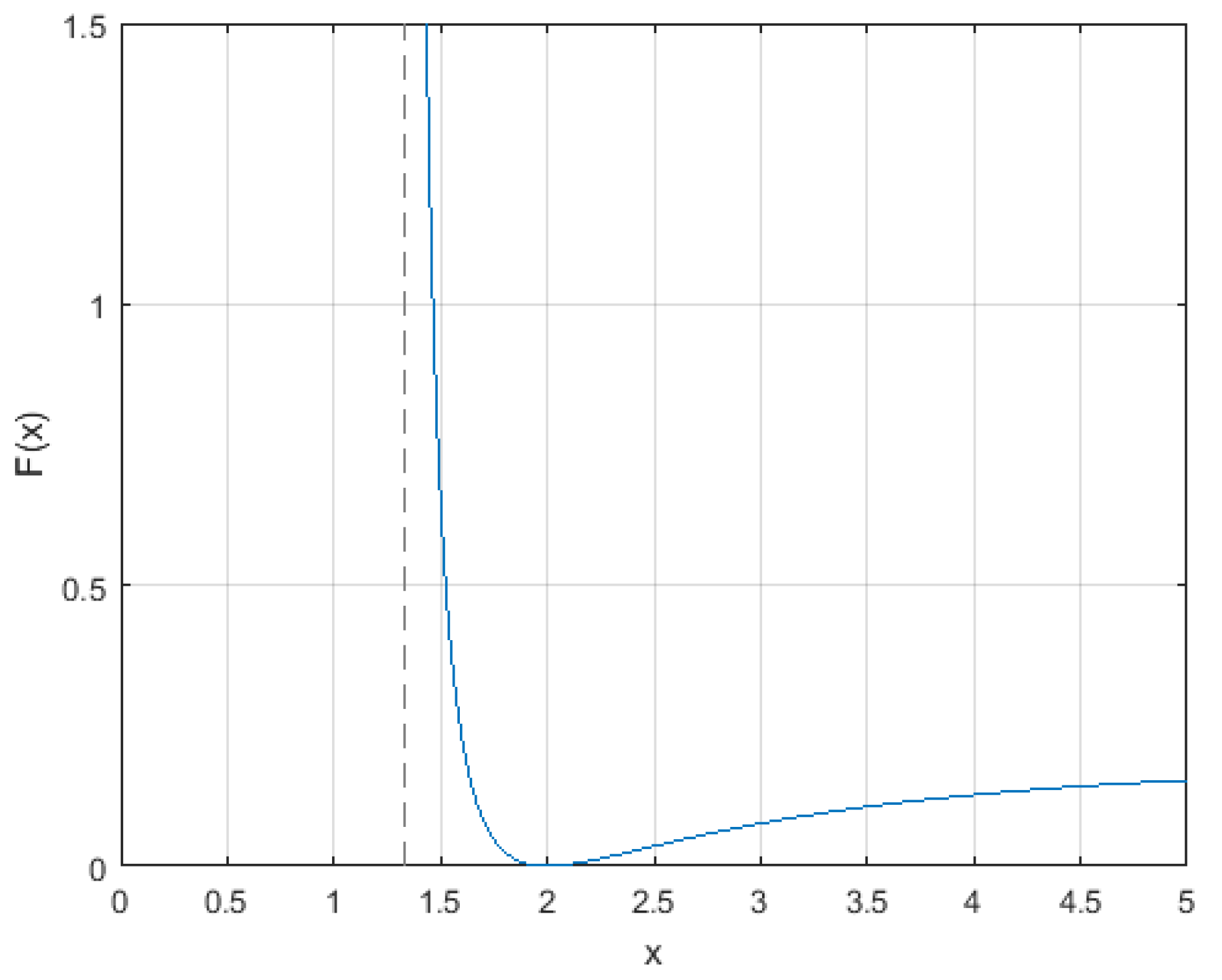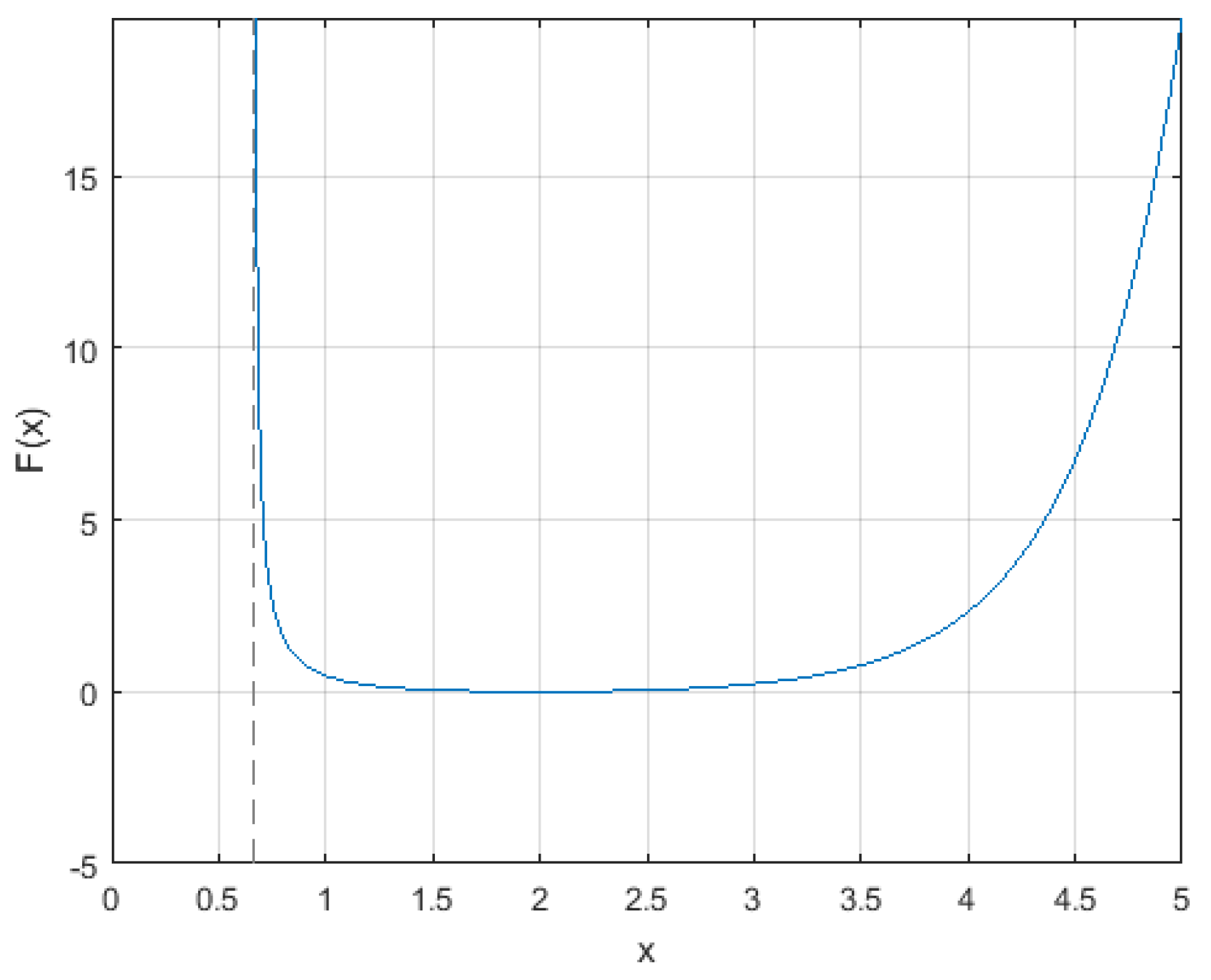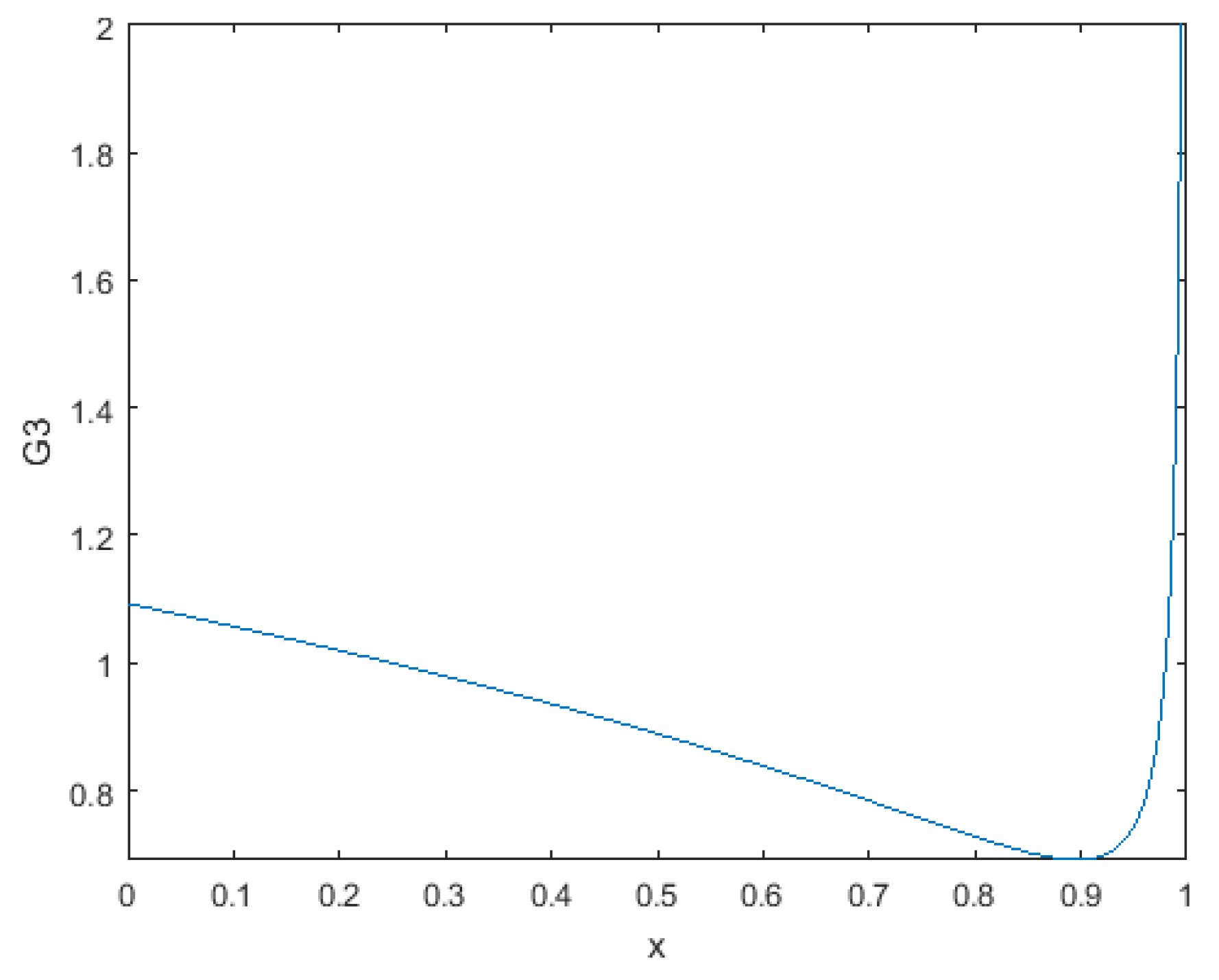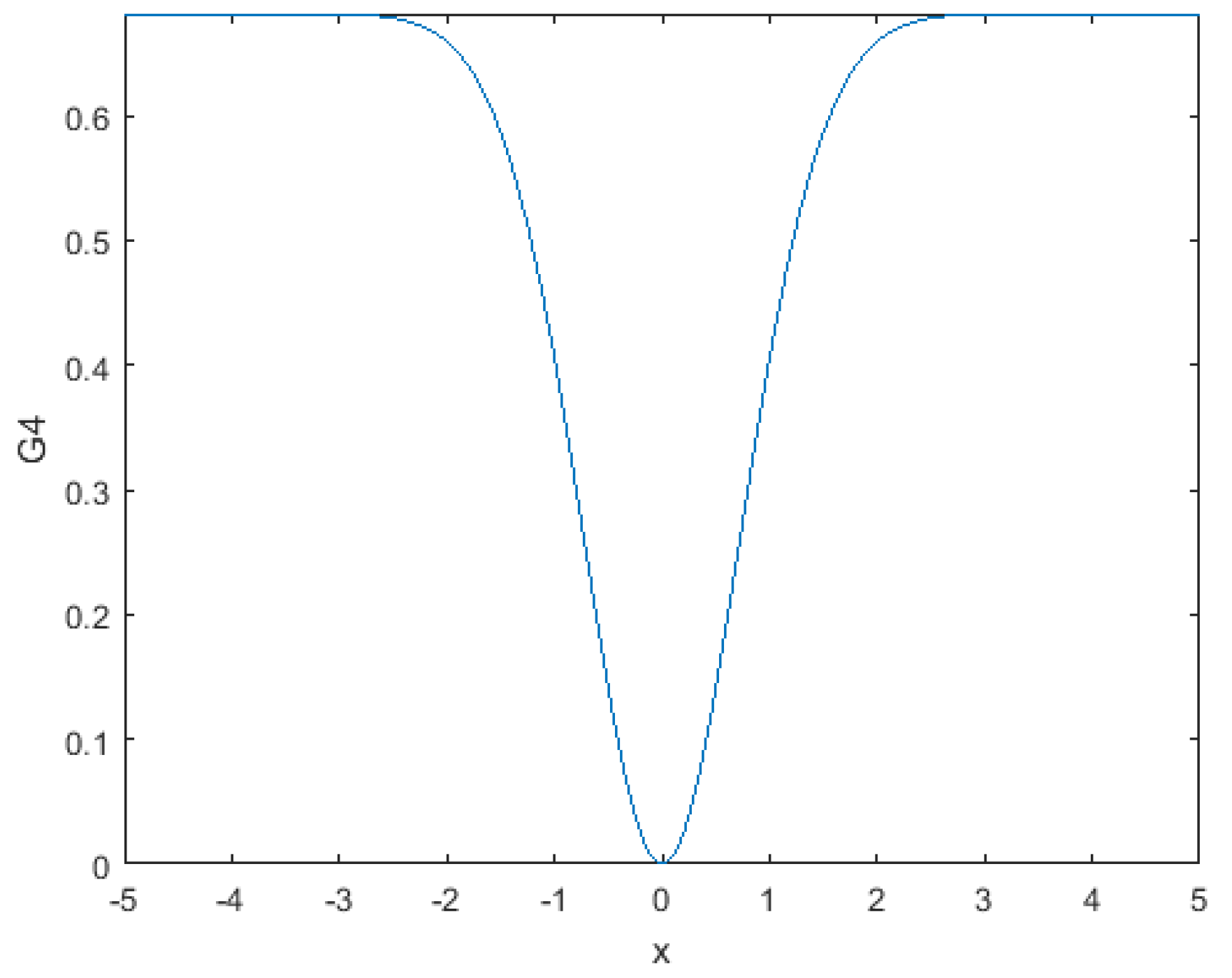Inequalities for Basic Special Functions Using Hölder Inequality
Abstract
1. Introduction
2. Results
2.1. An Inequality for the Riemann Zeta Function
2.2. An Inequality of Type (9) or (11) for the Gamma Function
2.3. An Inequality for the Polygamma Function
2.4. An Inequality of Type (10) or (12) for the Beta Function
2.5. An Inequality for the Gauss Hypergeometric Function
2.6. An Inequality for the Confluent Hypergeometric Function
3. Conclusions
Author Contributions
Funding
Data Availability Statement
Conflicts of Interest
References
- Agarwal, P.; Dragomir, S.S.; Jleli, M.; Samet, B. (Eds.) Advances in Mathematical Inequalities and Applications; Springer: Singapore, 2018. [Google Scholar]
- Pachpatte, B.G. Mathematical Inequalities; Elsevier: Amsterdam, The Netherlands, 2005. [Google Scholar]
- Mitrinovic, D.S.; Pecaric, J.E.; Fink, A.M. Classical and New Inequalities in Analysis; Kluwer Academic: Dordrecht, The Netherlands, 1993. [Google Scholar]
- Masjed-Jamei, M. A main inequality for several special functions. Comput. Math. Appl. 2010, 60, 1280–1289. [Google Scholar] [CrossRef]
- Masjed-Jamei, M. A generic inequality for basic special functions. Integral. Trans. Spec. Funct. 2023, 34, 384–398. [Google Scholar] [CrossRef]
- Prudnikov, A.P.; Brychkov, Y.A.; Marichev, O.I. Integrals and Series: More Special Functions; Gordon and Breach: New York, NY, USA, 1990; Volume 3. [Google Scholar]
- Masjed-Jamei, M. Special Functions and Generalized Sturm-Liouville Problems; Springer Nature: Cham, Switzerland, 2020. [Google Scholar]
- Available online: https://functions.wolfram.com (accessed on 24 September 2024).
- Chen, C.P.; Malesević, B. Inequalities related to certain inverse trigonometric and inverse hyperbolic functions. RACSAM 2020, 114, 105. [Google Scholar] [CrossRef]
- Chen, X.D.; Nie, L.; Huang, W. New inequalities between the inverse hyperbolic tangent and the analogue for corresponding functions. J. Inequal. Appl. 2020, 2020, 131. [Google Scholar] [CrossRef]
- Chesneau, C.; Bagul, Y.J. On a reverse trigonometric Masjed-Jamei inequality. Asia Pac. J. Math. 2021, 35, 33–37. [Google Scholar]
- Zhu, L.; Malesević, B. Natural approximation of Masjed-Jamei’s inequality. RACSAM 2020, 114, 25. [Google Scholar] [CrossRef]






Disclaimer/Publisher’s Note: The statements, opinions and data contained in all publications are solely those of the individual author(s) and contributor(s) and not of MDPI and/or the editor(s). MDPI and/or the editor(s) disclaim responsibility for any injury to people or property resulting from any ideas, methods, instructions or products referred to in the content. |
© 2024 by the authors. Licensee MDPI, Basel, Switzerland. This article is an open access article distributed under the terms and conditions of the Creative Commons Attribution (CC BY) license (https://creativecommons.org/licenses/by/4.0/).
Share and Cite
Masjed-Jamei, M.; Moalemi, Z.; Saad, N. Inequalities for Basic Special Functions Using Hölder Inequality. Mathematics 2024, 12, 3037. https://doi.org/10.3390/math12193037
Masjed-Jamei M, Moalemi Z, Saad N. Inequalities for Basic Special Functions Using Hölder Inequality. Mathematics. 2024; 12(19):3037. https://doi.org/10.3390/math12193037
Chicago/Turabian StyleMasjed-Jamei, Mohammad, Zahra Moalemi, and Nasser Saad. 2024. "Inequalities for Basic Special Functions Using Hölder Inequality" Mathematics 12, no. 19: 3037. https://doi.org/10.3390/math12193037
APA StyleMasjed-Jamei, M., Moalemi, Z., & Saad, N. (2024). Inequalities for Basic Special Functions Using Hölder Inequality. Mathematics, 12(19), 3037. https://doi.org/10.3390/math12193037





